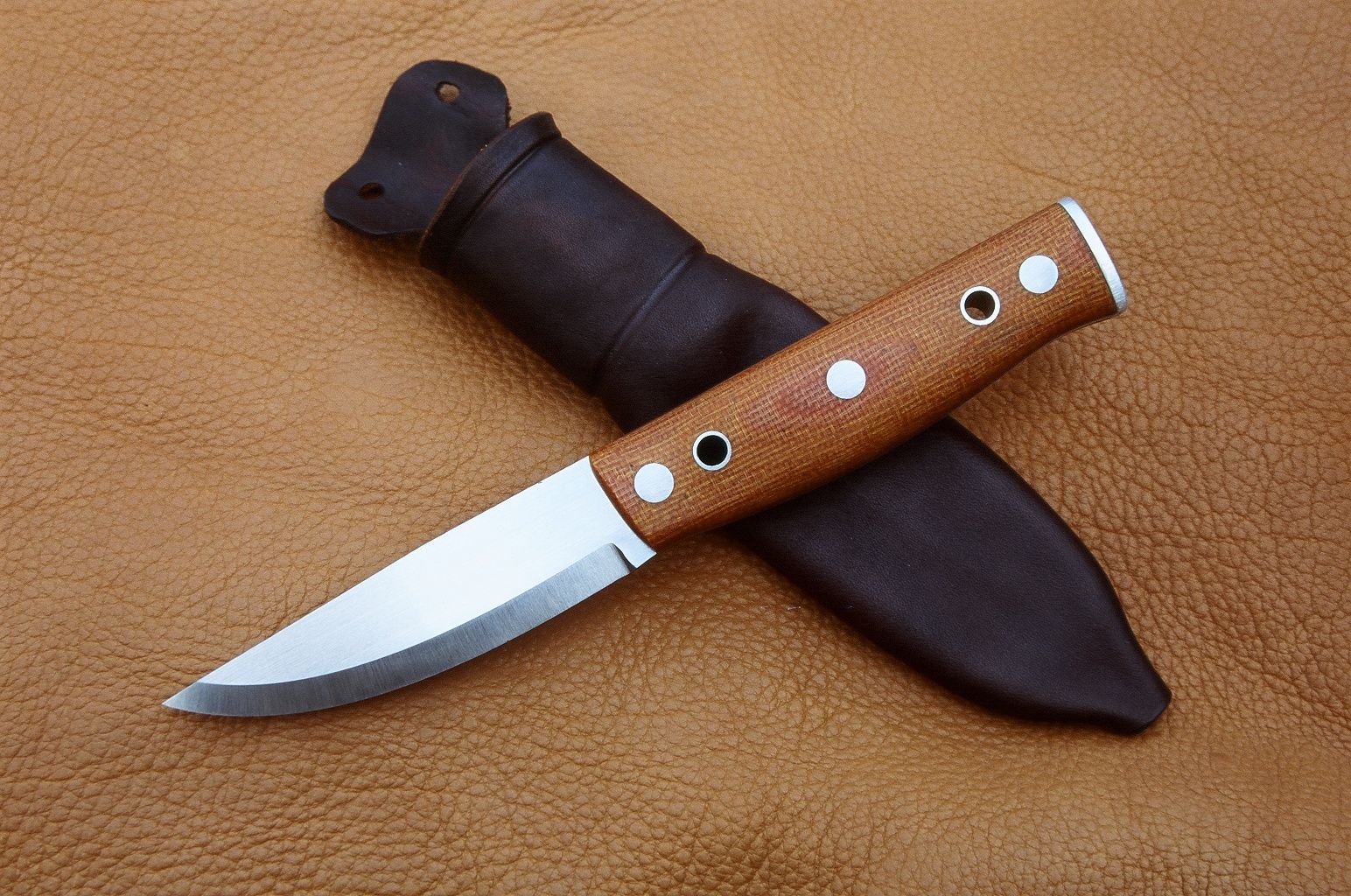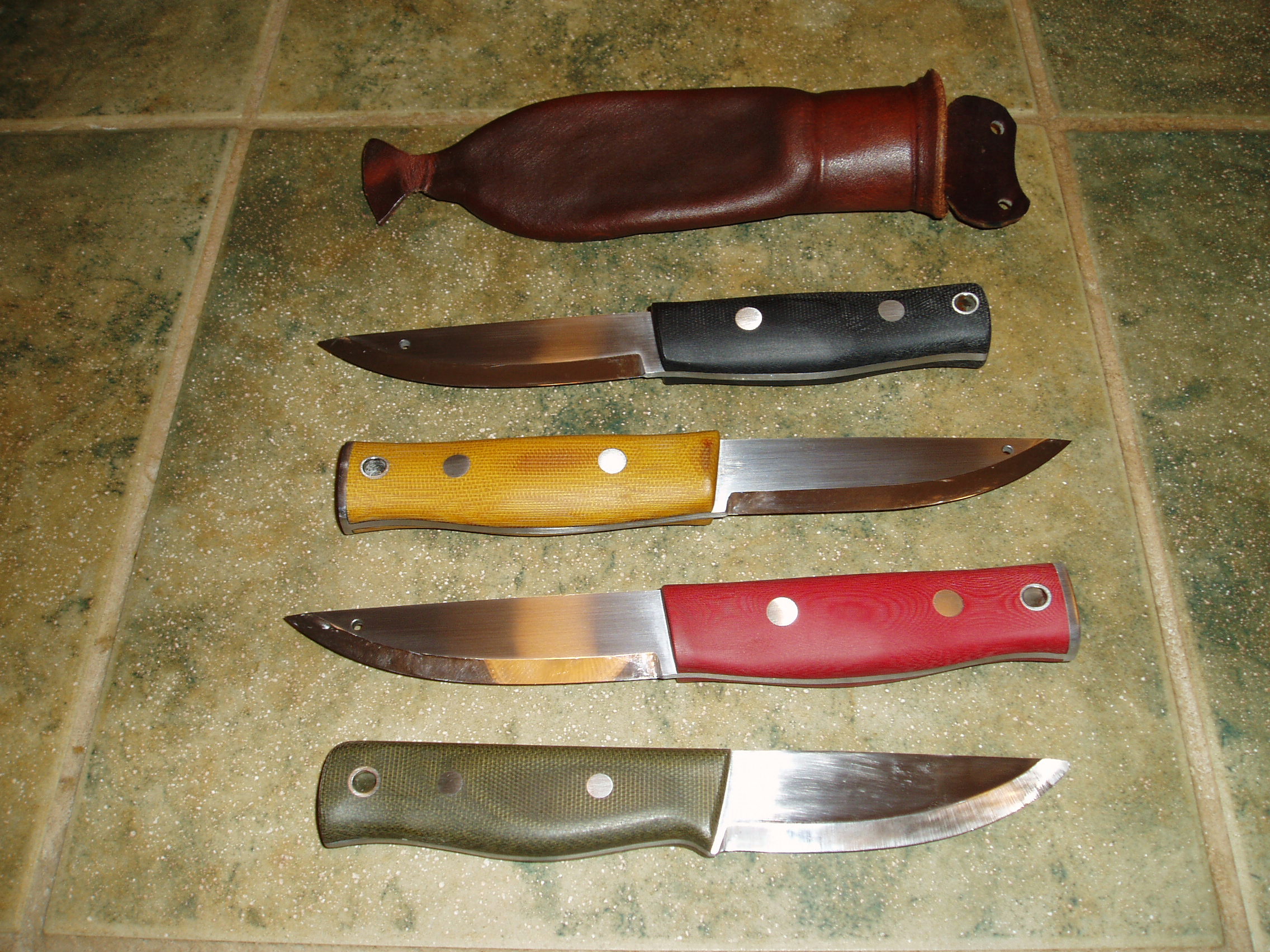
Skookum Bush Tool Company
Knives by Rod Garcia

The SBT MK1 was inspired by Mors Kochanski and is made here in Whitefish, Montana
USA
With the ever growing pressure from the faithful, I am taking orders again as of
April 1st, 2009.
The backlog is still running 10 months + and will increase quickly with impending future orders.
Please keep in mind I am a small specialty shop and still put the knives together one at a time. The popularity of the MK1 has been overwhelming to say the least and I am doing my best. The time frame I give the perspective customer is an estimate, not a guarantee. I have not always met the expectations of some but one must keep in mind I do not take any money until your knife is finished, therefore patience is respectfully requested. If you order a knife and can't wait any longer and decide to cancel before I finish, I understand. Just give me a heads up so I can move on to the next order without further delay.
Please note: Price increase below
CPM 3V is a very tough tool steel made by the Crucible Particle Metallurgy process. 3V is about 100% tougher than A2 or O1 and has better rust preventative characteristics than either, but is not classified as a stainless steel. With this toughness comes higher cost and more difficulty in sharpening with natural stones though. As with A2 you will be unable to derive a spark from 3V by the flint and steel method. If you are in need of a very strong edge, are abusive to your equipment, or want a high tech steel and don't mind paying extra ($20 over the standard price) then this may be the steel for you. Just remember, high tech steels are not panaceas and will never replace good sense and properly developed skill on the part of the user.

This photo shows the handle colors (on a few early testers) and sheath construction.
Knife Specifications :
Contact me, via e-mail at rod@skookumbushtool.com
If you decide to order a knife, send me the specifications you want ( steel choice, handle color, and preference for a shearing hole or not, etc.) a mailing address, email, and a phone number . I do NOT take deposits, but will contact you for payment (by Pay Pal or money order) once your knife is finished.* The current back order is ten to twelve+ months as of April 1, 2009.
*Since I take no money up front, you have 14 days to pay after notification of order completion. Unpaid orders will be offered for sale to others, and your next order will go to the bottom of the list.
Skookum Bush Tool Company reserves the right to make changes at any time and of any nature to its products including but not limited to price, design, shipping, and handling.
Some notes on the so-called "scandi grind" bevel and SBT knives.
This type of bevel has superior wood carving characteristics compared to other types of bevels. However, it is more prone to edge rolling (compared to thicker, secondary bevel type bevels) because of the sinuous nature of the bevel if the edge is not prepped properly or is being abused. Steel is just so strong and even CPM 3V will tolerate just so much when you consider how thin the actual cutting edge is.
The SBT MK1 leaves my shop with a sharp edge that I finish on the grinder with a well worn 600 grit belt. This edge will shave hair but I do not consider it a working edge just yet. There will most likely be a very fine wire edge remaining, this is especially true with A2. This is where the new owner comes in. When the new knife is received the owner should put the knife to a strop and work the edge until the wire is removed. The more stropping you do the more of a convex edge will occur. This slight convex edge will increase the strength of the actual cutting edge without inhibiting the superior carving of the scandi flat grind bevel ( the amount of convexity created will be very small). Another option is to create a micro bevel by going back to the honing stone, tipping the edge up another 15-20 degrees beyond the bevel face and put ten-fifteen strokes on each side of the edge and go back to the strop. This will give you a stronger general purpose edge. Remember, these are general suggestions, knife makers have no control over the skill levels of the user and their sharpening equipment. The user will need to work out their own program.
Also, when sharpening a scandi bevel, make sure you take the individual steps of each grit to completion. We tend to get in a hurry and not finish each step, especially the final steps of honing and stropping. If you follow through with each step and strop until the bevel shines, you will most likely have a very sharp and durable edge that will be the envy of all who see it!
So the next time you are having problems with an edge folding over, regardless of make, reassess your sharpening program first before you grab your pitch fork and start poking at the maker.
Thanks and happy cutting,
Rod